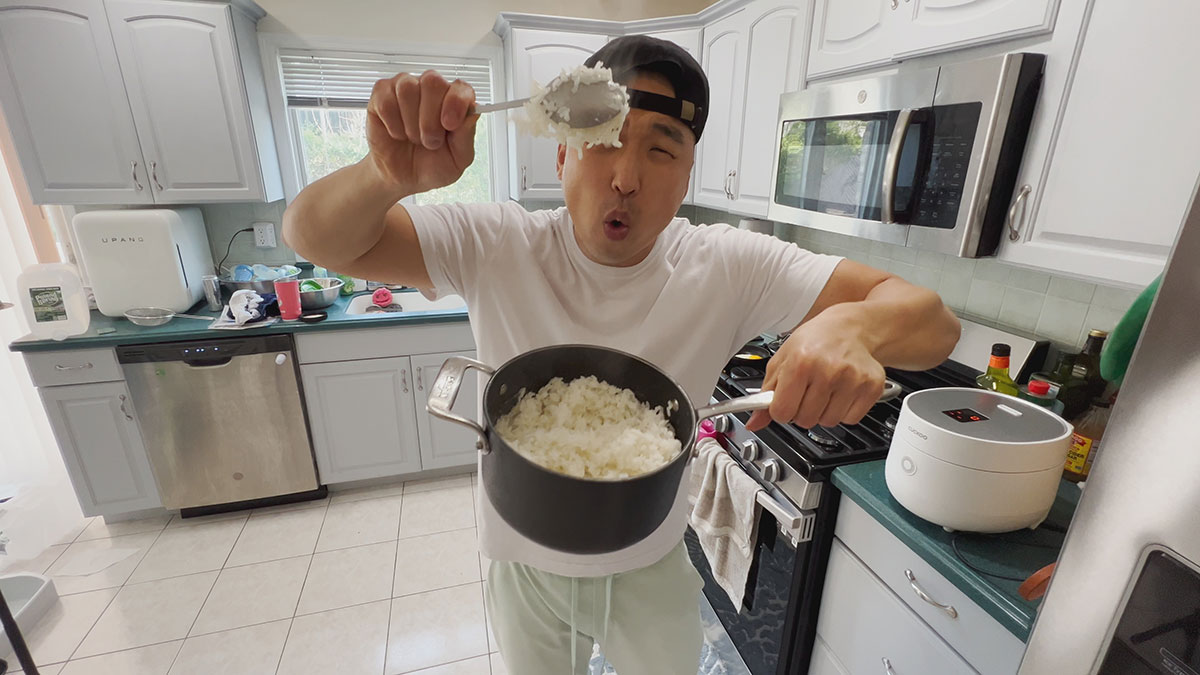Mastering the Art: How to Cook Sticky Rice in a Rice Cooker
Written By James Morgan
Sticky rice, celebrated in various Asian cuisines, boasts a unique texture and flavor that distinguish it from other rice varieties. Ideal for an array of dishes, from sushi rolls to mango sticky rice, learning how to cook sticky rice in a rice cooker can elevate your culinary skills. With the right technique, you can achieve perfectly cooked sticky rice every time.
:max_bytes(150000):strip_icc()/faw-rice-cookers-test-zojirushi-induction-elizabeth-theriot-02-ee42a4572dfb475380df1e4b12bb422b.jpg)
Why Sticky Rice?
Sticky rice, also known as glutinous rice, is famed for its chewy and sticky texture, making it a stellar companion for many Asian dishes. Unlike regular rice, sticky rice clumps together, making it easier to pick up with chopsticks or hands, which explains its popularity in Southeast Asian cuisines. Mastering the art of cooking sticky rice will open doors to a variety of dishes, including dim sum, sushi, and rice desserts.
:max_bytes(150000):strip_icc()/__opt__aboutcom__coeus__resources__content_migration__simply_recipes__uploads__2020__03__Rice-Cookers-LEAD-14-c55e0a43686f4428be2beb8e07079414.jpg)
Understanding Your Ingredients
Before we delve into the step-by-step process of how to cook sticky rice in a rice cooker, it's crucial to understand the star ingredient: sticky rice itself. High-quality sticky rice makes a significant difference. Typically, glutinous rice grains are opaque and milky white when uncooked, unlike regular white rice, which is translucent. Ensure you purchase rice specifically labeled as sticky or glutinous, which you can find in most Asian grocery stores or online. Understanding your ingredients is the first step toward culinary excellence.

Essential Tools for Cooking Sticky Rice
To achieve that perfect sticky rice consistency, you'll need some essential tools:
- Rice Cooker: A good quality rice cooker can simplify your life.
- Knife Set: Essential for prep work.
- Cutting Board: Necessary for preparing additional ingredients for your meal.

Ingredients List
- 2 cups of glutinous rice
- Water
- 1 teaspoon of salt (optional)
The Process: How to Cook Sticky Rice in a Rice Cooker
Step 1: Measuring the Rice
Start by measuring the amount of glutinous rice you want to cook. Generally, 2 cups of uncooked rice yield enough for 4-5 servings of sticky rice. Pour the measured rice into a large bowl.
Step 2: Washing the Rice
Washing the rice is a crucial step you must not skip. It helps remove excess starch, resulting in a less sticky final product. Fill the bowl with cold water and swirl the rice with your fingers. Drain the water and repeat this process 3-4 times until the water becomes clearer.
Step 3: Soaking the Rice
Soaking the rice is another vital step in ensuring your rice cooker can achieve that perfect sticky texture. After washing, soak the rice in cold water for at least 4-5 hours, or preferably overnight. This step helps hydrate the grains and ensures they cook evenly.
Step 4: Draining the Rice
Once the rice has soaked sufficiently, drain any remaining water. A fine-mesh strainer works best for this. Ensure the rice is well-drained before you put it into the rice cooker.
Step 5: Adding Water
Transfer the soaked and drained rice into your rice cooker. Add water, but not as much as you would for regular rice. The general rule for sticky rice is a 1:1 ratio of rice to water. You want just enough water to cook the rice and maintain its sticky texture without making it mushy.
Step 6: Cooking the Rice
Close the lid of your rice cooker and set it to the 'Cook' setting. Most rice cookers will automatically switch to the 'Keep Warm' setting once the rice is done, but you can check for doneness by lifting the lid and inspecting the rice grains. If the rice is tender and all the water has been absorbed, it's good to go.
Step 7: Letting it Sit
After the rice cooker switches to 'Keep Warm', let the rice sit for an additional 10-15 minutes. This will allow excess moisture to evaporate, ensuring each grain is perfectly sticky yet not overly wet.
Serving Your Perfect Sticky Rice
Your perfectly cooked sticky rice is now ready to be served. How you serve it can vary widely depending on the dish you want to create. For sushi, you might want to season it with a mixture of rice vinegar, sugar, and salt. For Thai dishes, simply serve it plain alongside meats and vegetables. The serving possibilities are endless!
Troubleshooting Common Issues
Rice is Too Watery
If your sticky rice turns out too watery, it usually means you've added too much water. Ensure you follow the 1:1 ratio strictly. Draining the soaked rice thoroughly before cooking can also help prevent this issue.
Rice is Too Hard
If the rice is undercooked or too hard, it could mean that it wasn't soaked long enough. Make sure you soak the rice for at least 4-5 hours. Additional soaking time is always better for achieving the right texture.
Rice is Not Sticky
If your rice isn't sticky, it could be due to the type of rice you used. Ensure you are using glutinous or sticky rice and not another variety. The soaking and washing steps are also crucial for achieving that perfect stickiness.
Conclusion
Mastering how to cook sticky rice in a rice cooker is a culinary skill that can dramatically expand your cooking repertoire. Not only does it serve as a versatile base for countless dishes, but it also brings an authentic touch to your home-cooked Asian meals. Once you understand the key steps and necessary techniques, achieving that perfect sticky consistency becomes straightforward. So get your hands on a good quality rice cooker, invest in high-quality glutinous rice, and start impressing your friends and family with perfectly cooked sticky rice.
As an Amazon Associate, I earn from qualifying purchases.
Essential Tools and Cleaners for Maintaining Your Cookware
These tools and cleaners can help you maintain the longevity and efficiency of your cooking tools, ensuring consistent results every time. For more tips and tricks on perfecting your kitchen skills, check out this Epicurious article.



